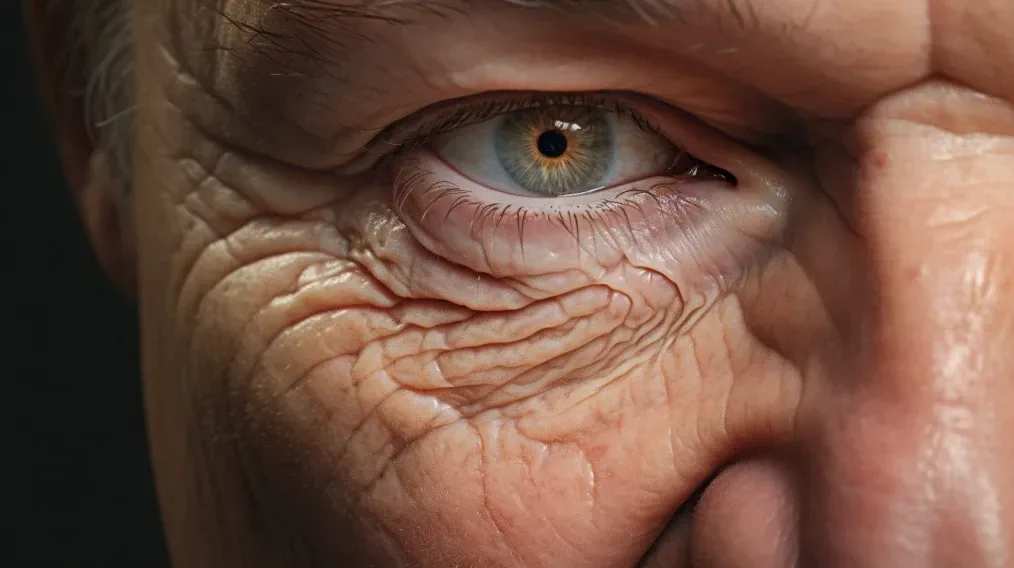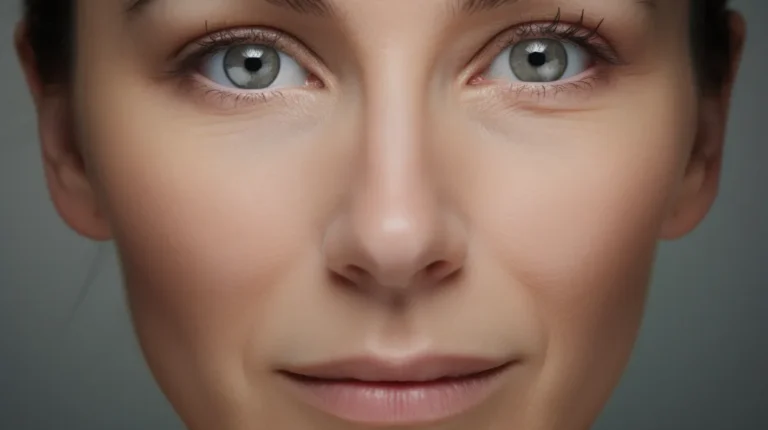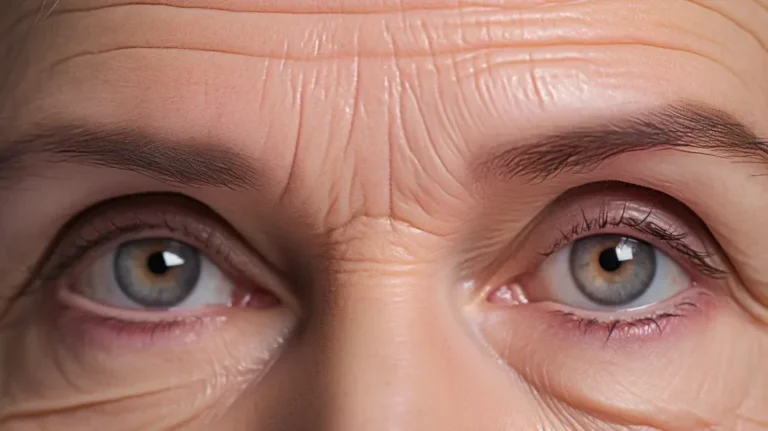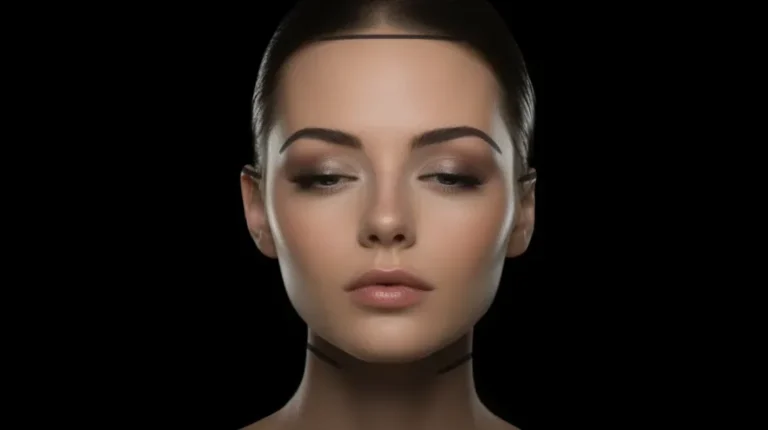Face Botox: Know The Risks Before Trying It
Are you thinking about trying face Botox to smooth out those wrinkles? Before you go ahead, it’s essential to know the risks involved.
Did you know that over 6 million Botox procedures were performed in 2019 alone? In this article, we’ll give you the lowdown on the potential complications and side effects of facial Botox. We’ll cover everything from minor Face Botox risks to more serious ones, like infections and muscle weakness.
Plus, we’ll talk about the importance of considering your medical history and finding a skilled practitioner to minimize these risks.
By the end, you’ll have all the information you need to make an informed decision about whether Face Botox is right for you.
Key Takeaways
- Facial Botox carries potential risks and complications, both minor and severe, which should be thoroughly understood before undergoing the treatment.
- A patient’s medical history plays a crucial role in determining their suitability for Botox, as certain conditions or medications may increase the risks.
- The injection technique used in administering Botox can significantly minimize the risks and adverse effects associated with the treatment.
- Strategies for managing and mitigating adverse effects post-treatment should be implemented to ensure patient safety and satisfaction.
Potential Face Botox Risks
Facial Botox, widely used for cosmetic enhancements, is generally considered safe but comes with potential risks, as with any medical procedure. Awareness and understanding of these risks are crucial before undergoing treatment.
- Common Complications: The most frequent side effects include bruising, swelling, or redness at the injection sites. These are usually mild and resolve within a few days. Temporary headaches or flu-like symptoms may also occur shortly after the treatment.
- Muscle Weakness or Drooping: In some cases, Botox may lead to muscle weakness or drooping in areas near the injection site. This can result in an uneven facial appearance or difficulties in facial expressions, typically temporary.
- Facial Asymmetry: Incorrectly placed injections can lead to facial asymmetry, where one side of the face appears different from the other. This risk underscores the importance of choosing a skilled and experienced injector.
- Risk of Infection: Although rare, there’s a slight risk of infection at the injection site. Following post-treatment care instructions and maintaining good hygiene can help mitigate this risk.
- Allergic Reactions: Some individuals might experience allergic reactions to Botox, which can include itching, rash, or, in severe cases, anaphylaxis. It’s essential to inform your healthcare provider about any known allergies.
- Unintended Spread of Toxin: There’s a small risk that the Botox toxin could spread beyond the treatment area, affecting nearby muscles or tissues. This can lead to symptoms like muscle weakness, vision problems, or difficulty speaking or swallowing.
- Contraindications and Pre-existing Conditions: Certain health conditions or medications can increase the risk of complications with Botox. It’s vital to disclose your complete medical history to your provider.
- Informed Consent: Before undergoing Botox, a detailed discussion with your healthcare provider about the risks, benefits, and realistic expectations is essential. Informed consent means you understand and agree to the potential outcomes and risks.
Overactive bladder is a medical condition that can significantly impact daily life. While it stands as a distinct health issue, it’s interesting to note that sources discussing overactive bladder also often mention conditions like chronic migraines, cervical dystonia, and cosmetic concerns such as frown lines, facial wrinkles, and droopy eyelids.
These varied conditions, ranging from vision issues like double vision and blurred vision to cosmetic reasons, highlight the broad spectrum of concerns addressed by medical professionals. The overlap in these topics suggests a comprehensive approach in healthcare, where a single medical professional may address a range of symptoms and conditions, offering both therapeutic and cosmetic treatments.
Importance of Medical History Assessment
A comprehensive medical history assessment is paramount for anyone considering Face Botox treatments. This step is not just a formality; it’s a crucial aspect of ensuring your safety and the success of the procedure.
- Determining Suitability for Botox: Your medical history helps the cosmetic dermatologist determine whether Botox is an appropriate treatment for you. Certain conditions may increase the risk of complications or render Botox an unsuitable option.
- Identifying Potential Contraindications: There are specific health conditions and factors that might contraindicate the use of Botox. For example, neuromuscular disorders like myasthenia gravis or Lambert-Eaton syndrome can be exacerbated by the botulinum toxin.
- Allergies and Sensitivities: It’s crucial to disclose any known allergies, especially to botulinum toxin or other components in Botox. Allergic reactions to Botox, while rare, can be severe.
- Impact of Medications: Certain medications, particularly those that affect muscle function or blood clotting, can interact with Botox. Medications like blood thinners, muscle relaxants, or other neurotoxins need to be discussed with your provider.
- Previous Cosmetic Procedures: Knowledge of past cosmetic treatments, especially those involving injections or surgeries in the facial area, is essential. This information can influence the approach your dermatologist takes with Botox.
- Overall Health and Wellness: General health information, including any recent illnesses or infections, particularly skin infections, can impact the safety and effectiveness of Botox.
- Honesty and Transparency: Be as open and detailed as possible when discussing your medical history. Withholding information can increase the risk of side effects and complications.
- Customized Treatment Plan: A thorough understanding of your medical background allows the dermatologist to tailor the Botox treatment to your specific needs and conditions, ensuring optimal results.
Role of Injection Technique in Risk Reduction
During a facial Botox treatment, the skillful and precise injection technique employed by your cosmetic dermatologist plays a crucial role in minimizing the risks associated with the procedure. To ensure patient safety in cosmetic procedures and manage potential Botox side effects, here are five key factors to consider in Botox injection techniques:
- Proper identification of injection sites: A trained professional should have a thorough understanding of facial anatomy to accurately identify the appropriate injection sites for optimal results and minimal risk.
- Correct dosage and concentration: Precise measurement and administration of Botox dosage and concentration are essential to avoid adverse effects and ensure desired outcomes.
- Needle placement and depth: The skillful placement of the needle at the correct depth is crucial to ensure the effective delivery of the neurotoxin without causing damage to surrounding structures.
- Injection speed and technique: The speed and technique of injection can impact the spread and diffusion of Botox, influencing both the efficacy and potential side effects.
- Post-treatment care and monitoring: Proper post-treatment care and monitoring help in managing and mitigating any adverse effects that may occur after the procedure.
Strategies for Managing Adverse Effects
To effectively manage the adverse effects of facial Botox, it’s essential to have a comprehensive understanding of potential complications and develop strategies to minimize treatment risks.
This includes proper injection techniques to ensure precise placement and dosage, as well as post-treatment care guidelines to mitigate any potential complications.
Adverse Effects Management
Manage and mitigate adverse effects with strategic measures when considering Face Botox. Here are some essential strategies to keep in mind:
- Stay informed: Educate yourself about the potential risks and complications associated with Botox treatment, including allergic reactions.
- Choose a qualified practitioner: Opt for a certified and experienced practitioner who follows proper injection techniques and adheres to safety protocols.
- Follow post-treatment care guidelines: Take necessary precautions and follow the instructions provided by your practitioner to minimize the risk of complications.
- Schedule a follow-up appointment: Regularly visit your practitioner for a follow-up evaluation to ensure your treatment is progressing well and address any concerns.
- Communicate any adverse effects: If you experience any unexpected side effects or complications, promptly inform your practitioner for appropriate management.
By implementing these strategies, you can effectively manage adverse effects and ensure the safety and success of your Botox treatment.
Post-Treatment Complications Mitigation
After receiving a Face Botox treatment, it’s essential to be aware of strategies for managing and mitigating any potential adverse effects. Here are some critical post-treatment care guidelines to follow:
- Monitor for facial asymmetry post-Botox: Keep an eye out for any noticeable differences in your facial symmetry. If you notice any unevenness or asymmetry, contact your healthcare provider immediately.
- Be cautious of Botox and facial nerve damage: Although rare, facial nerve damage can occur as a complication of Botox injections. If you experience any unusual sensations or muscle weakness, seek medical attention promptly.
- Follow post-Botox care guidelines: Your healthcare provider will provide specific instructions for aftercare, such as avoiding strenuous activities, not touching or rubbing the treated area, and staying upright for a few hours after the procedure.
- Attend follow-up appointments: Regularly scheduled follow-up appointments with your healthcare provider are crucial to ensure proper monitoring and promptly address any concerns or complications.
- Communicate openly with your healthcare provider: If you have any questions or concerns during the recovery period, don’t hesitate to reach out to your healthcare provider for guidance and support.
Regulatory Landscape for Botox Use
Now, let’s explore the regulatory landscape surrounding the use of Botox.
Safety regulations for Botox ensure that the procedure is performed by qualified practitioners who adhere to injection guidelines. These regulations aim to protect patients by promoting compliance with standard practices and minimizing the risk of complications.
Safety Regulations for Botox
When considering facial Botox, it’s essential to be aware of the safety regulations that govern its use. Here are some key points to keep in mind:
- Cosmetic treatment regulations: Botox is regulated as a medical procedure and should only be administered by certified professionals in authorized clinics.
- Pre-treatment evaluation for Botox: Before receiving Botox injections, a thorough evaluation should be conducted to assess the suitability of the treatment for each individual.
- Botox clinics and certification: It’s crucial to choose a reputable clinic that has certified practitioners trained in administering Botox injections.
- Adherence to guidelines: Botox practitioners should follow established guidelines and protocols to ensure the safety and effectiveness of the treatment.
- Ongoing training and education: Botox practitioners should continually update their knowledge and skills through specialized training programs to stay up-to-date with the latest techniques and safety measures.
Qualifications for Botox Practitioners
To ensure the safe and effective administration of facial Botox, practitioners must possess the necessary qualifications and adhere to the regulatory landscape governing its use. Botulinum toxin type A, commonly known as Botox, is a prescription medication that should only be administered by trained healthcare professionals.
In many countries, including the United States, regulations and guidelines exist to ensure the proper use of Botox in aesthetic medicine. These regulations cover aspects such as the training and certification of practitioners, the storage and handling of the medication, and the documentation and consent process for patients.
Botox training for practitioners typically includes comprehensive education on facial anatomy, injection techniques, dosage calculation, and managing potential complications. Practitioners must stay updated with the latest guidelines and best practices to ensure patient safety and optimal results.
Compliance With Injection Guidelines
Comply with injection guidelines to ensure the safe and effective use of Botox for facial rejuvenation. It’s crucial to follow these guidelines to minimize the risks associated with the procedure. Here are some key points to consider:
- Injection sites for facial Botox: The precise location of the injections is vital to achieve the desired results and avoid potential complications.
- Long-term effects of Botox: While Botox is a temporary solution for wrinkles, research suggests that repeated use may have cumulative long-term effects on facial muscles.
- Patient reviews of facial Botox: Reading reviews and testimonials from previous patients can provide insights into their experiences, satisfaction, and potential side effects.
- Regulatory landscape for Botox use: Understanding the regulations and guidelines set by regulatory bodies, such as the FDA, ensures that the treatment is administered safely and by qualified practitioners.
- Safety precautions: It’s essential to choose a reputable and certified provider who follows proper sterilization and hygiene practices to minimize the risk of infection or adverse reactions.
Ethical Considerations in Botox Treatments
Your ethical considerations when considering Botox treatments should include understanding the responsibilities of the practitioner. In the realm of cosmetic treatments, there’s an increasing emphasis on ethical practices. This includes providing thorough patient education on the risks and benefits of Botox.
Aesthetic treatment trends are also shifting towards a more natural and less invasive approach, with a focus on personalized treatment plans based on individual facial anatomy and aging patterns. Practitioners should stay updated with the latest safety protocols and injection techniques through continual education.
It’s essential to ensure that practitioners are qualified and adhere to regulatory guidelines. By prioritizing ethical considerations, patients can make informed decisions about their Botox treatments and ensure their safety and satisfaction.
Boosting Engagement Through Informative Tone
Boost your engagement by adopting an informative tone when discussing the risks and benefits of Face Botox. Here are some key points to consider:
- Explore alternative treatments to Botox that may be less invasive or more natural.
- Emphasize the importance of informed consent documents in cosmetic procedures.
Discuss the potential risks and complications associated with facial Botox.
- Provide information on how to manage and mitigate adverse effects post-treatment.
- Highlight the significance of boosting engagement through an informative tone to educate and empower readers.
Frequently Asked Questions
Are There Any Long-Term Effects or Complications Associated With Facial Botox?
There may be long-term effects and complications associated with facial Botox, such as muscle weakness, drooping eyelids, and allergic reactions. It’s essential to consult with a qualified professional to discuss potential risks before considering the treatment.
How Does a Patient’s Medical History Impact Their Suitability for Botox Treatment?
Your medical history plays a crucial role in determining your suitability for Botox treatment. Certain conditions or medications may increase the risks or affect the effectiveness of the procedure. It’s important to discuss this with your provider to ensure safe and appropriate treatment.
What Are Some Specific Injection Techniques That Can Help Minimize the Risks of Facial Botox?
To minimize the risks of facial Botox, your injector can use specific techniques such as proper needle placement, correct dosage calculation, and precise injection angles. These techniques help ensure safety and optimal results.
What Are Some Effective Strategies for Managing and Mitigating Adverse Effects That May Occur After Botox Treatment?
To manage and mitigate adverse effects after Botox treatment, you can follow post-treatment care guidelines provided by your practitioner. These may include avoiding strenuous activities, refraining from touching the treated area, and applying ice packs to reduce swelling or bruising.
What Regulations and Qualifications Govern the Use of Botox in Cosmetic Treatments, and How Can Patients Ensure They Are Receiving Treatment From Qualified Practitioners?
You’re wondering about the regulations and qualifications governing Botox in cosmetic treatments and how to ensure you’re seeing a qualified practitioner. It’s essential to know the standards to protect your safety and achieve optimal results.
Conclusion
In conclusion, while facial Botox can provide rejuvenation and reduce wrinkles, it’s crucial to be aware of the potential risks involved. By assessing your medical history and choosing a qualified practitioner, you can minimize these risks. However, it’s important to note that adverse effects can still occur.
For example, a case study showed that a patient experienced temporary drooping of the eyelid after Botox injections, which resolved within a few weeks.
Remember to carefully consider the risks and benefits before deciding on facial Botox.







